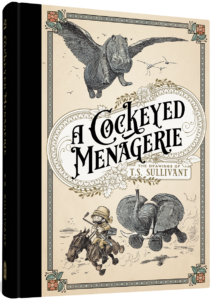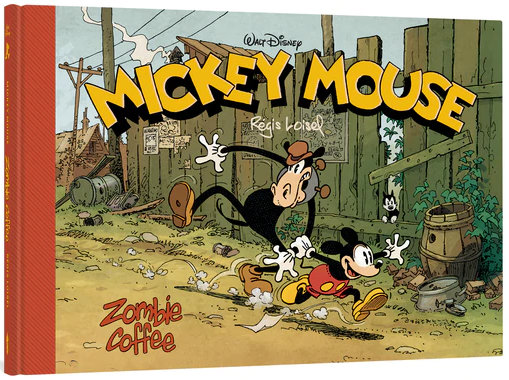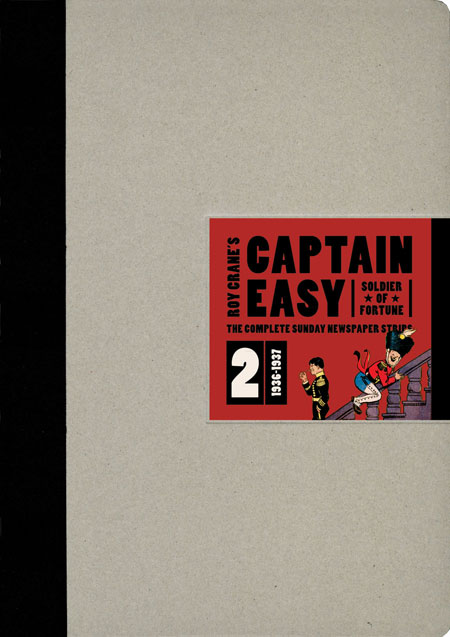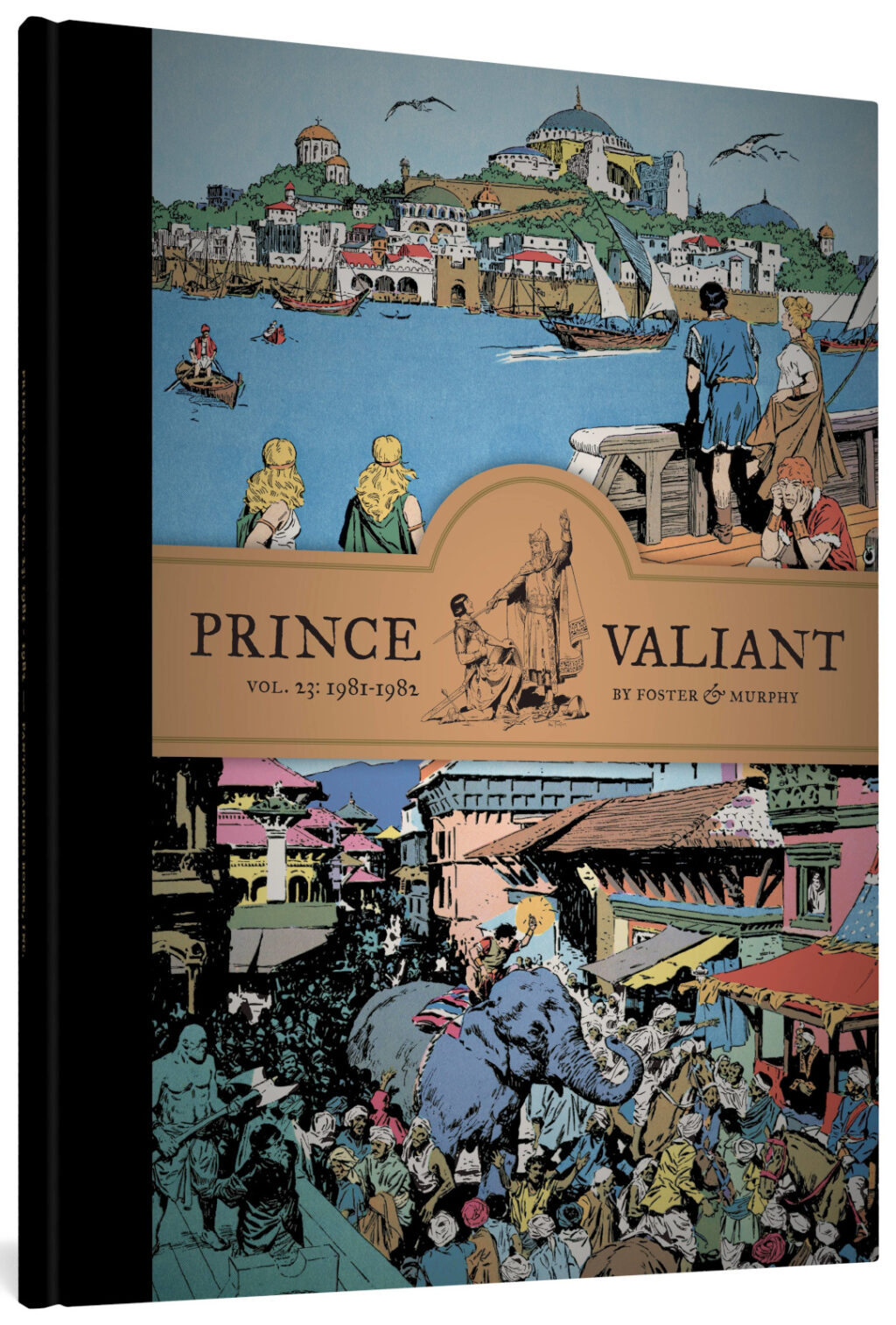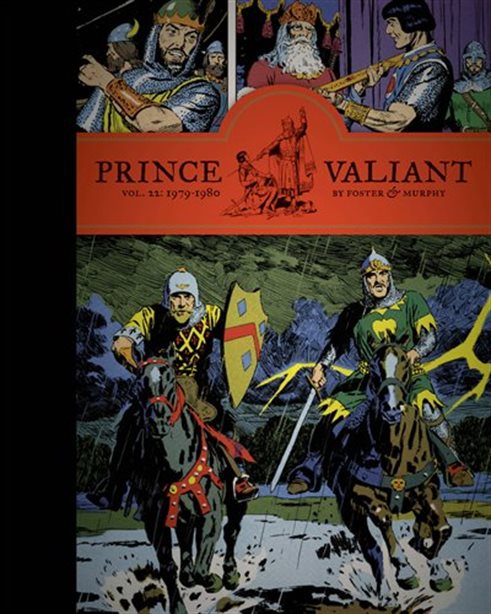Welcome to the cockeyed menagerie of Thomas Starling Sullivant. From the 1880s to the Roaring Twenties, Sullivant conjured up a whimsical world in pen and ink — riotous gag cartoons featuring anthropomorphic animals of all stripes; perennial American “types” like hobos, hayseeds, and urban hucksters; and familiar characters from ancient myths and biblical tales. Imbued with infectious joy, his drawings have inspired generations of artists and countless Disney films. Fantagraphics is proud to present the most comprehensive collection ever published of Sullivant’s delightfully off-kilter creations, which have not seen the light of day since their initial appearance in pioneering humor magazines over a century ago. Rounded out with aesthetic appreciations by artists Nancy Beiman, Barry Blitt, Steve Brodner, John Cuneo, Ricardo Martínez, Peter de Seve, and Jim Woodring; and scholarly essays by historians R.C. Harvey and Rick Marschall, A Cockeyed Menagerie gives this unheralded cartooning genius his due at last.
- Fantagraphics, February 2021
- ISBN 9781683963646
- 9.4″ × 12.4″, 424 pages, hardcover
- $74.99 USD
- Order online: Amazon
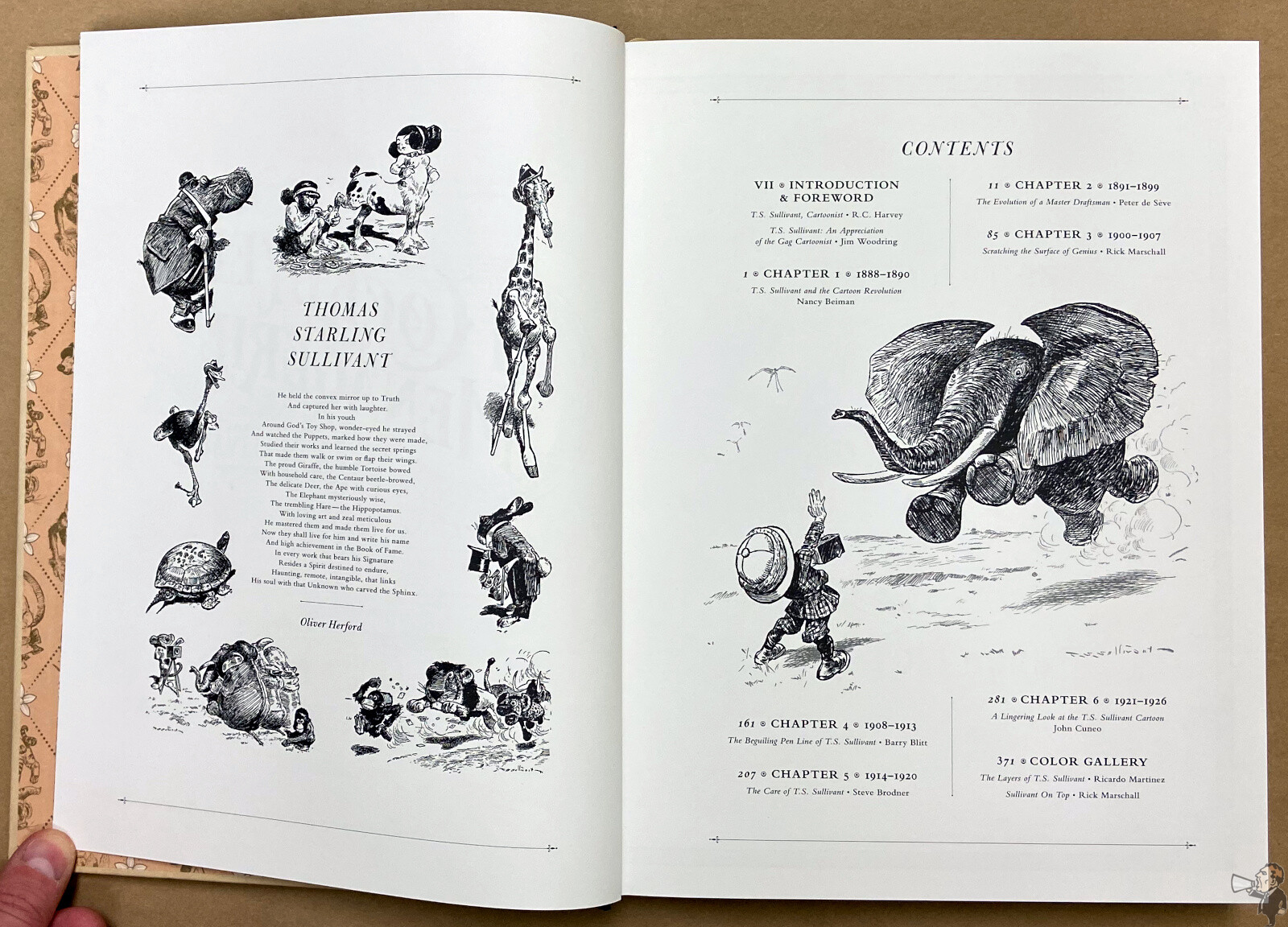

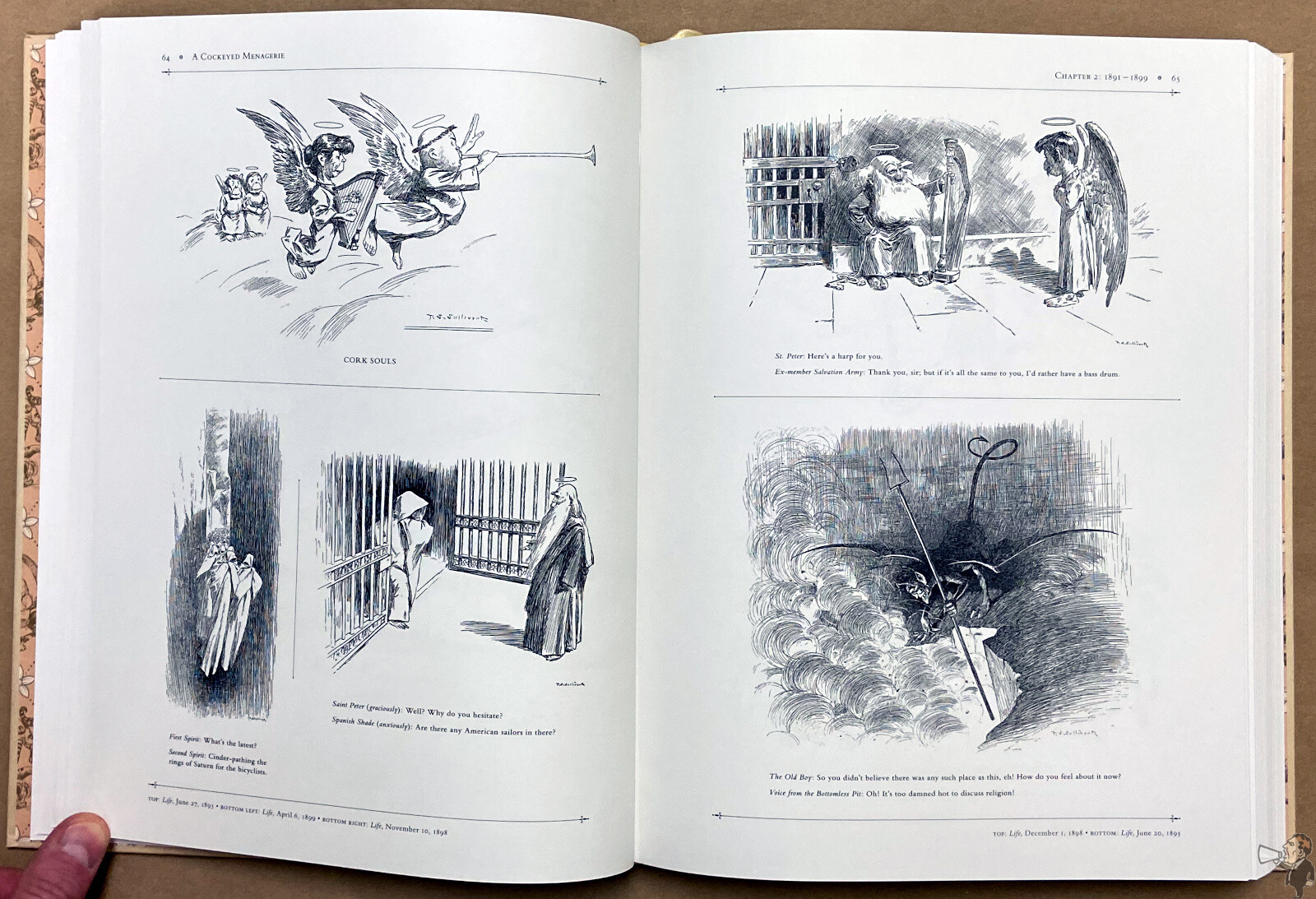
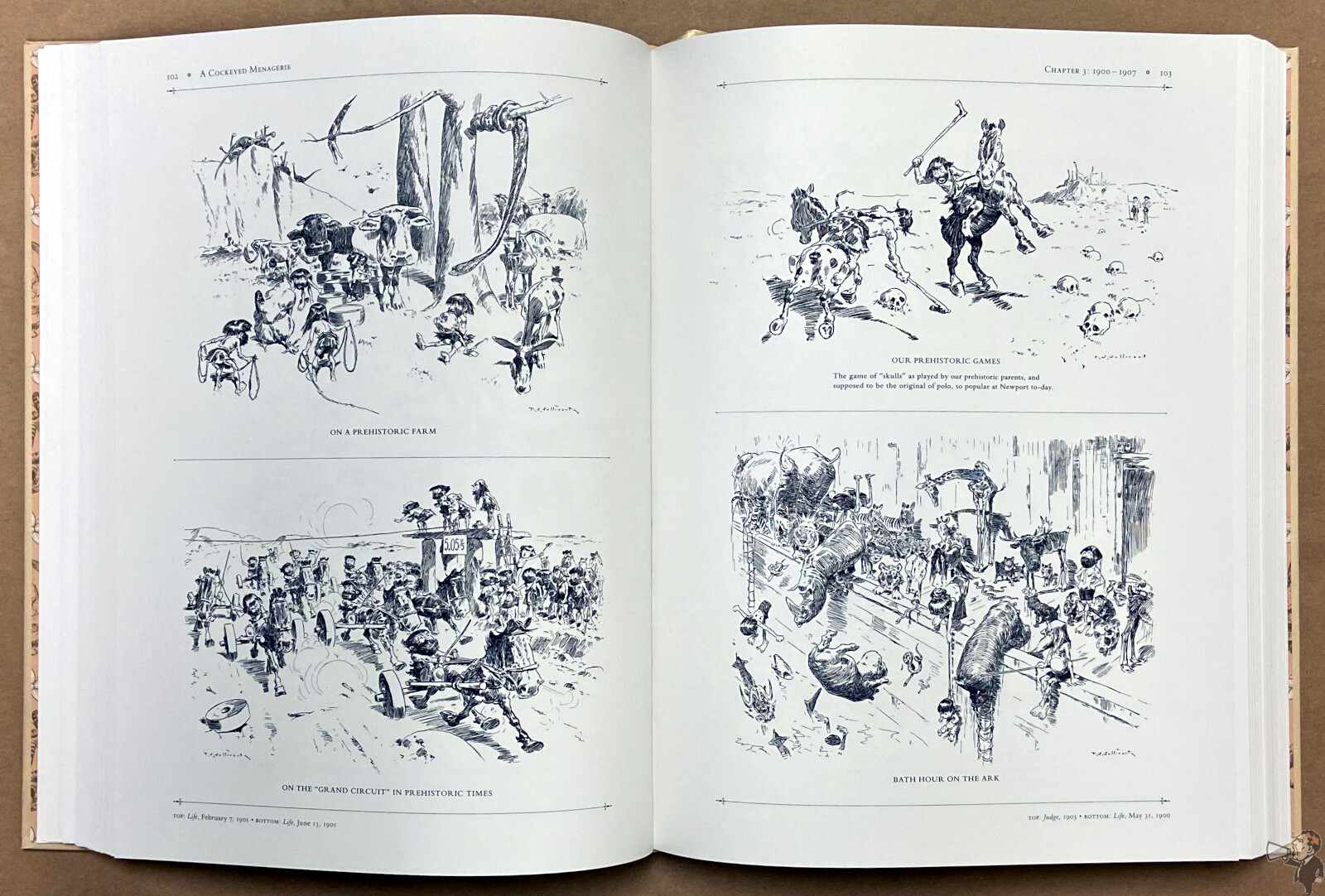
This is a comprehensive look at the work of T.S. Sullivant. I mean look in its visual meaning, as there are two short biographical essays and seven appreciations, but the rest is all illustrations. As R.C. Harvey notes, there is precious little information known about Sullivant, mostly from other artists of his time. And so he builds an introduction based on Sullivant’s work, providing a framework for the reader to experience the copious amount of art included.
What we do learn, from most of the contributors, is Sullivant’s aggressive drawing style where he would use a razor to remove layers of paper when he wasn’t happy with the results and draw on the newly exposed layer. The last chapter has some original art and illustrates on one piece where he removed layers, but I couldn’t see it. Perhaps when looking at an original in person.


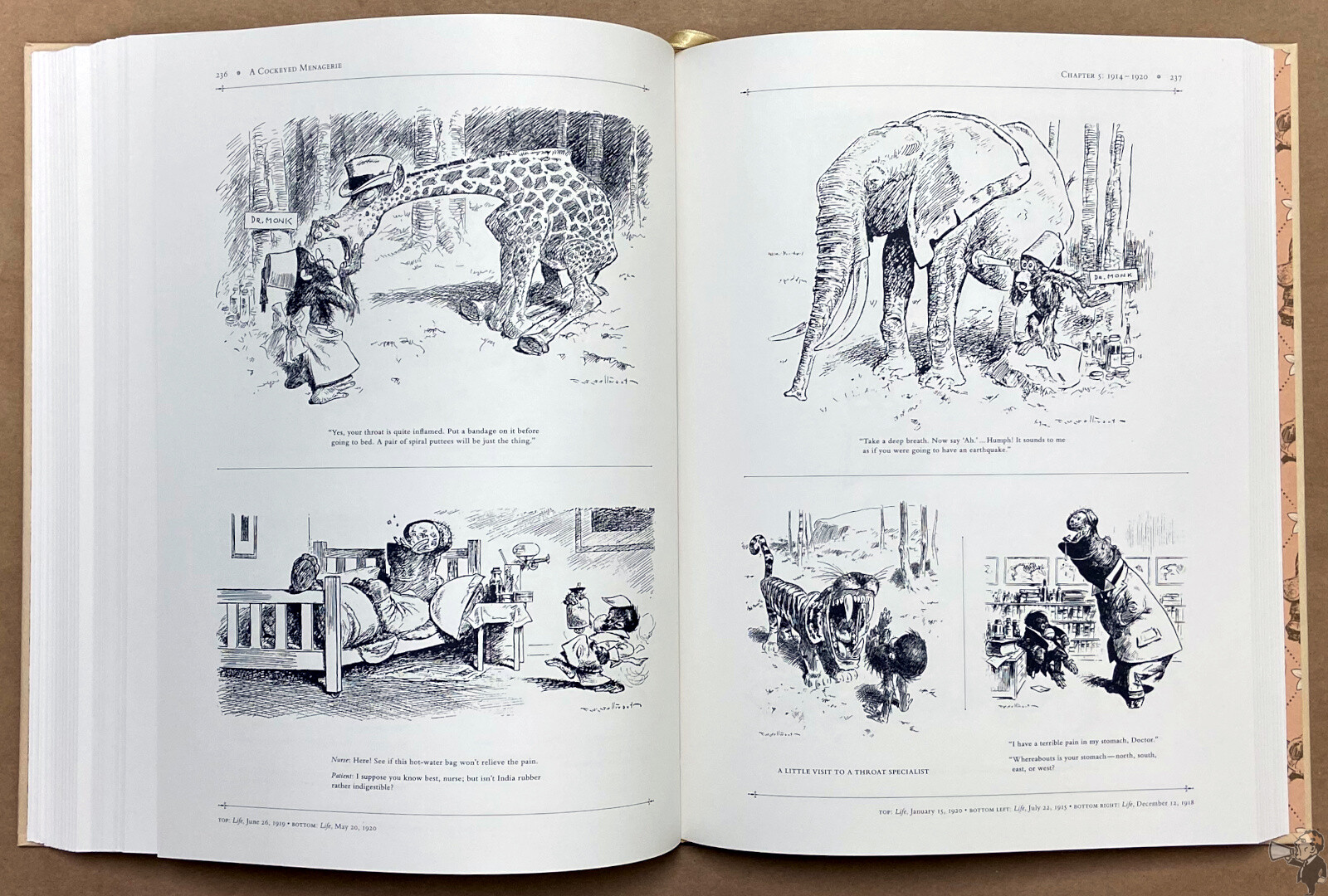
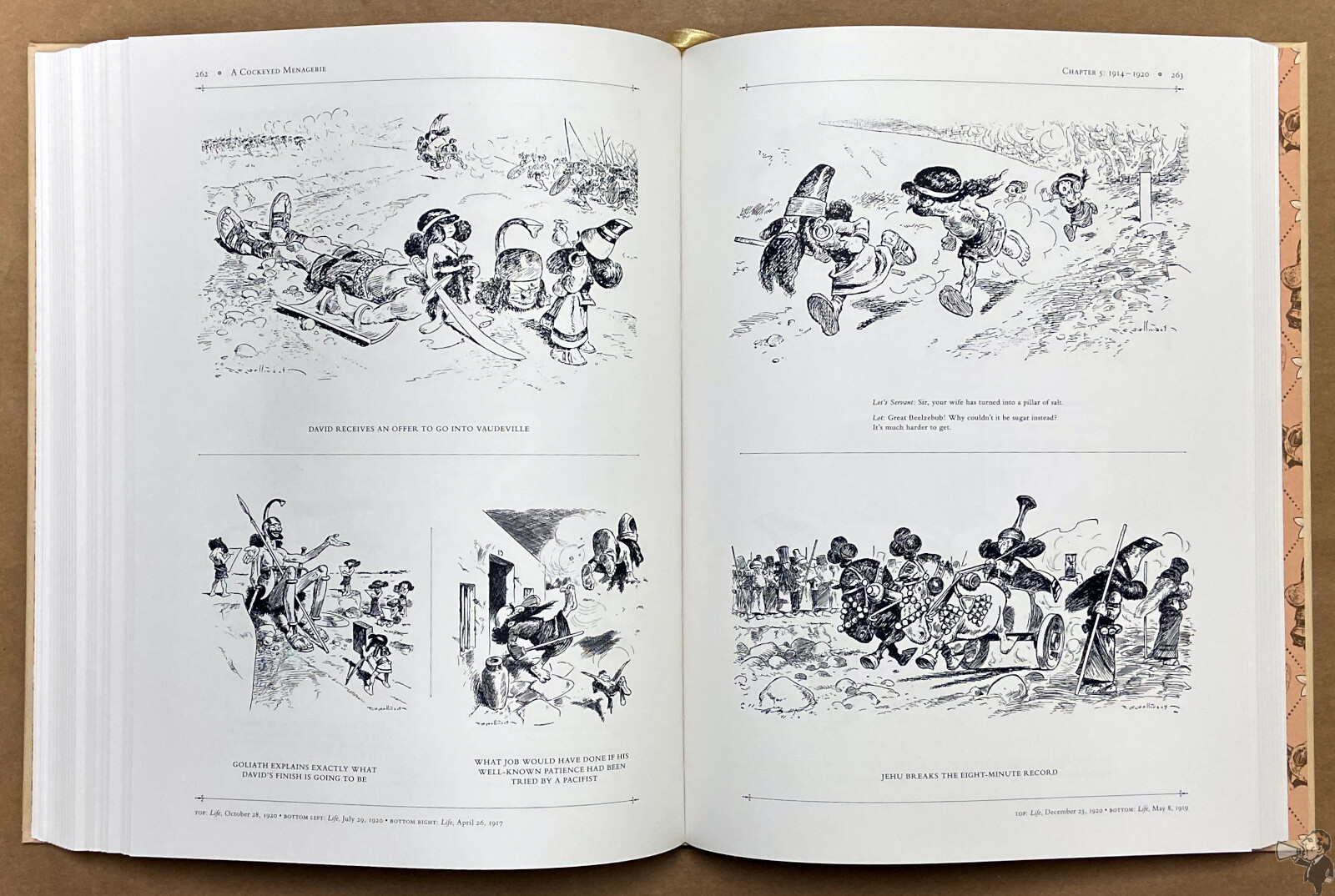
The book is divided into seven chapters, the first six in chronological order and the seventh in colour. Each chapter begins with an appreciation by an artist and then moves through that period of Sullivant’s work.
It’s mostly single image gags with a varying amount of text. I’d classify the humour as “dad” jokes, eliciting a smile or smirk but never outright laughter. What you’re here for is the art. And it’s a very exhaustive look at Sullivant’s output. You will go from no idea who he was to a very firm grasp of his style, output and body of work.
The book itself is a wonder to hold in your hand. With hundreds of pages of black and white illustrations, the design employs almost no colour: only the endpapers and cover. All pertinent information is displayed along the page edges: page numbers, chapter, publication and date. A sewn binding of thick paper stock with a slight gloss. And an all-important silk ribbon! The binding is a bit tight and opens to show double-page spreads after some spine stretching and page smoothing.
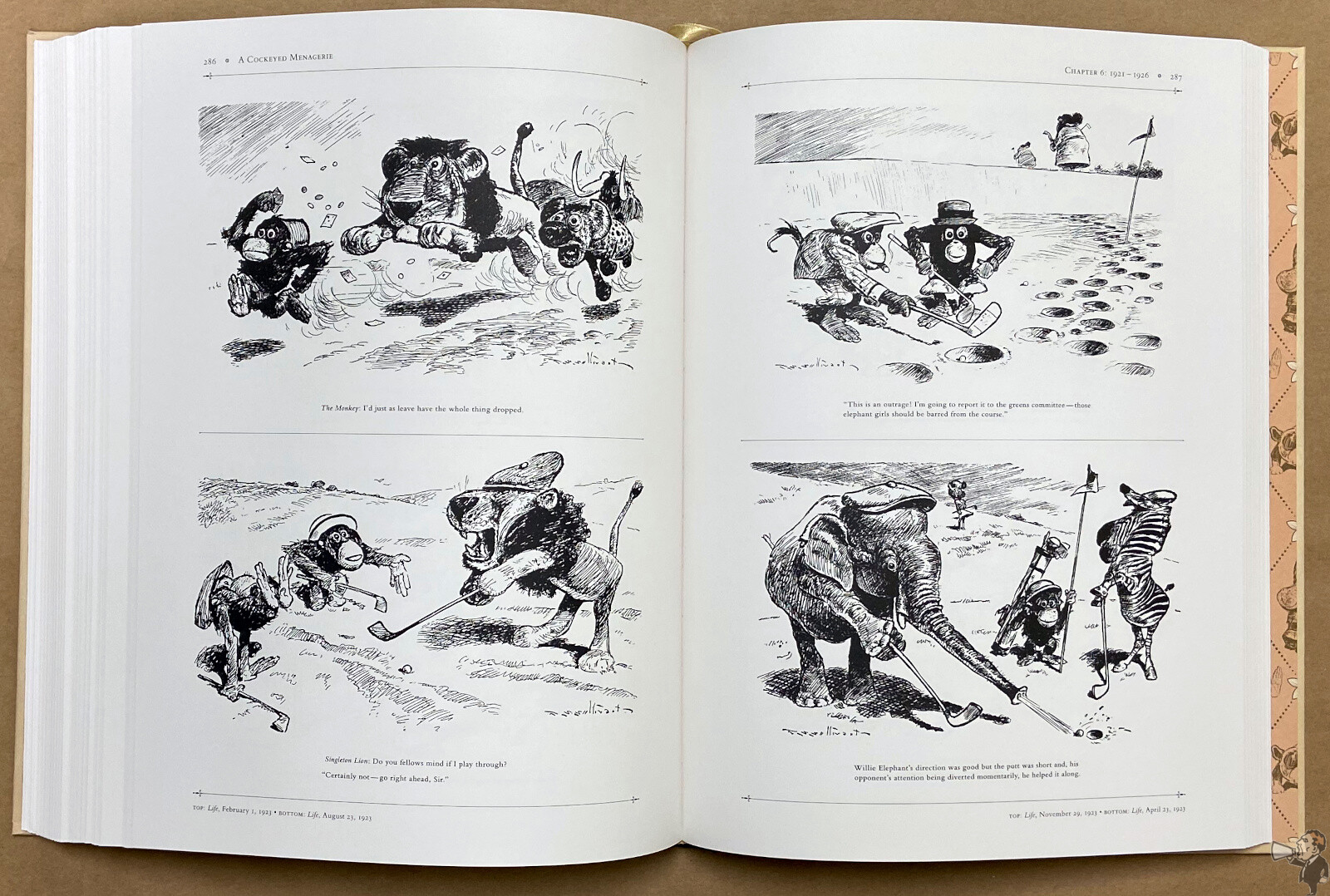
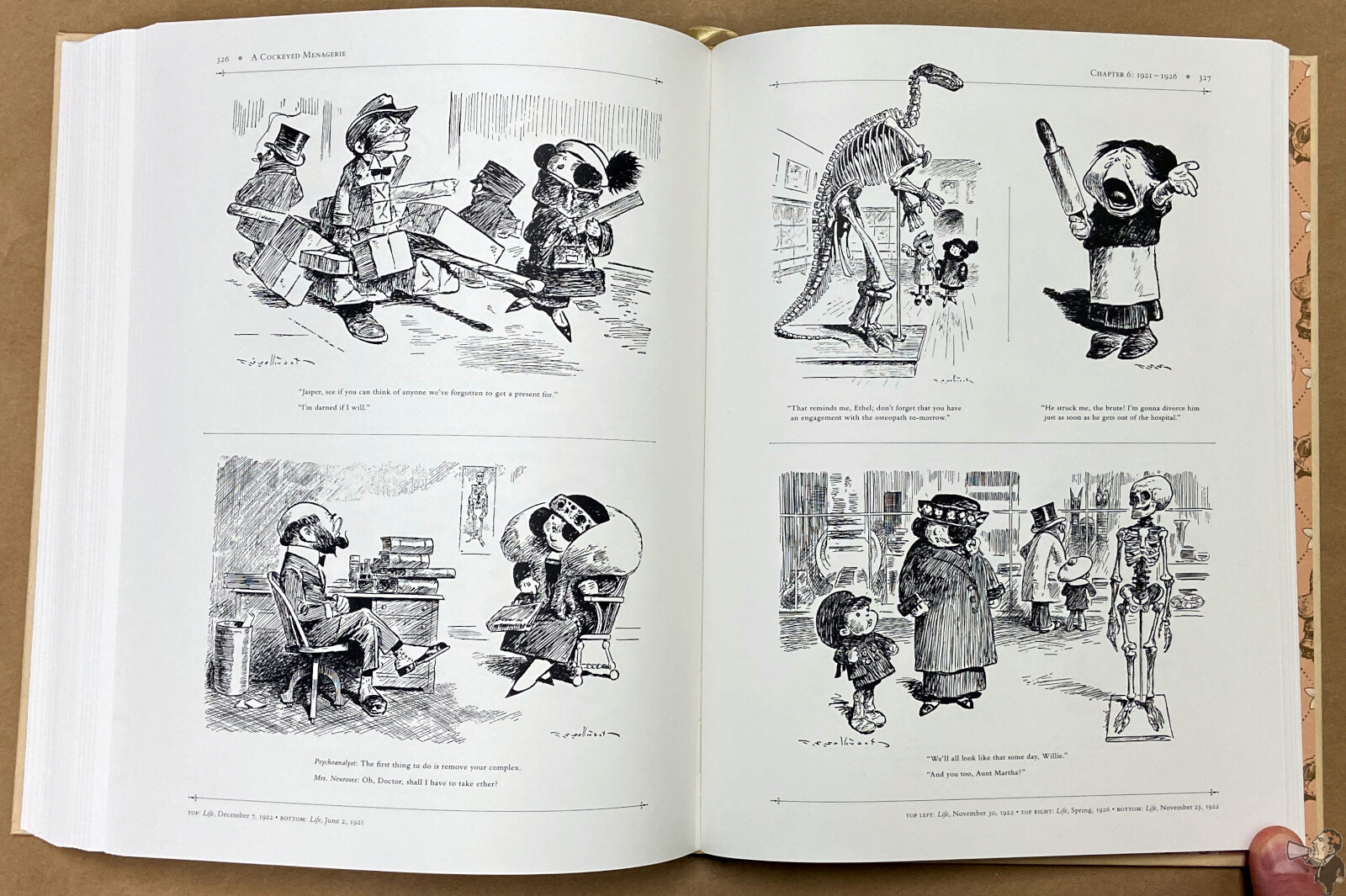


I had never heard of T.S. Sullivant nor this book until it was mentioned in a group on Facebook. I checked the Fantagraphics site but they had no sample pages, which doesn’t make much sense for a $75 book about an artist from over 100 years ago. My love of newspaper strips and illustration art pushed me to make the purchase and Amazon has it below cover. Still, the price is a tad dear, but that should be weighed against its 424 pages and how often you’ll pick this up for a quick thumbing.

